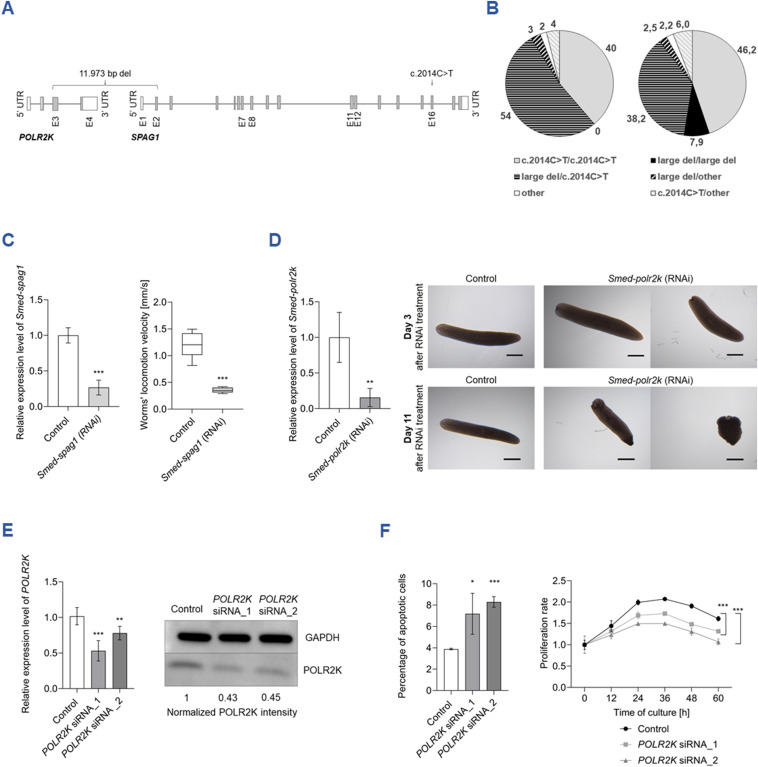
The lack of homozygotes with a large deletion encompassing SPAG1 and POLR2K in primary ciliary dyskinesia patients suggests the lethal effect of the loss of POLR2K protein


SPAG1 (sperm-associated antigen 1) is one of over 50 genes whose pathogenic variants underlie primary ciliary dyskinesia (PCD; OMIM244400), an inherited disorder affecting the function of motile cilia,1 highly conserved organelles protruding from the surface of eukaryotic cells. Pathogenic SPAG1 variants impair the assembly of dynein arms, essential elements of cilia. In a cohort of almost 300 affected individuals with the genetic bases of PCD explained during our long-term studies, pathogenic variants in SPAG1 were found in 60 unrelated patients, making it one of the most frequently involved genes in the Polish PCD population. Two predominant, previously reported variants1,2 were a nonsense mutation c.2014C>T in exon 16, found in both homozygotes and in compound heterozygotes, and a large 11,973 bp deletion encompassing parts of SPAG1, and of the upstream POLR2K (RNA polymerase II, I and III subunit K). c.2014C>T was found in 27 homozygotes and 31 compound heterozygotes, of whom 28 had the large deletion as the second allele; the large deletion was found in two more compound heterozygotes, accompanied in trans by rare pathogenic variants (Fig. 1A and Tables S1 and 2). Similar to previous reports,1,2 the large deletion was repetitively found in compound heterozygosity, but no homozygotes were identified.
